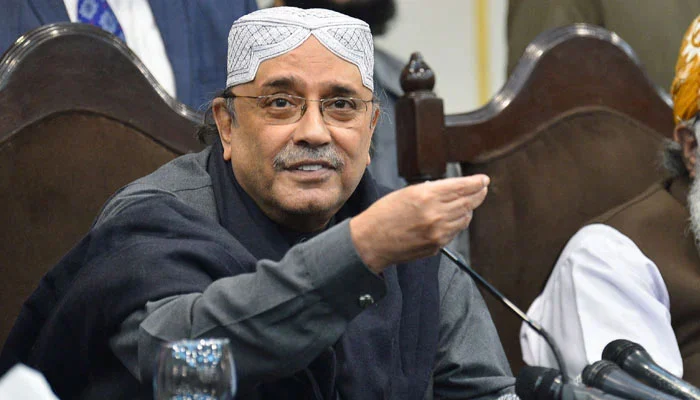Introduction:
The number of young voters in Pakistan has seen a significant surge, reaching 56.86 million from 46.43 million in 2018. This increase of 10.42 million in around six years positions the youth demographic to play a crucial role in the upcoming general elections. This report aims to analyze the distribution of young voters across provinces, age groups, and districts, providing insights into their potential impact on the electoral landscape.
Total Voters and Youth Proportion
The total number of voters stands at 128.58 million, with young voters (18-35 years) constituting 44.22% of the electorate. This represents an increase from 43.82% in 2018.
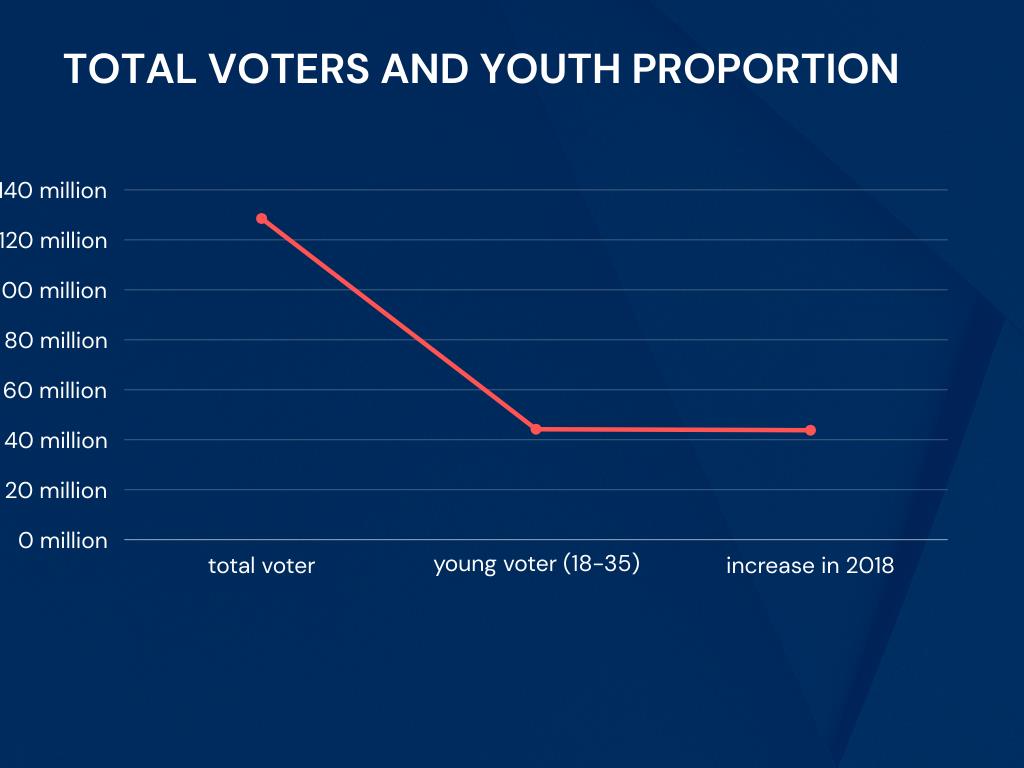
Provincial Breakdown
In terms of provincial breakdown, the surge in the number of young voters in Pakistan is evident across the country. Punjab, the most populous province, boasts a significant contingent of young voters with a total of 31.85 million. Following closely, Sindh contributes 11.72 million young voters to the national demographic shift. In Khyber Pakhtunkhwa (KP), a province known for its dynamic political landscape, 10.72 million young voters have emerged, reflecting a notable increase. Baluchistan, with its distinct cultural and geographical characteristics, accounts for 2.3 million young voters. This provincial distribution underscores the widespread nature of the youth surge, emphasizing the potential impact of the young electorate on the upcoming general elections.
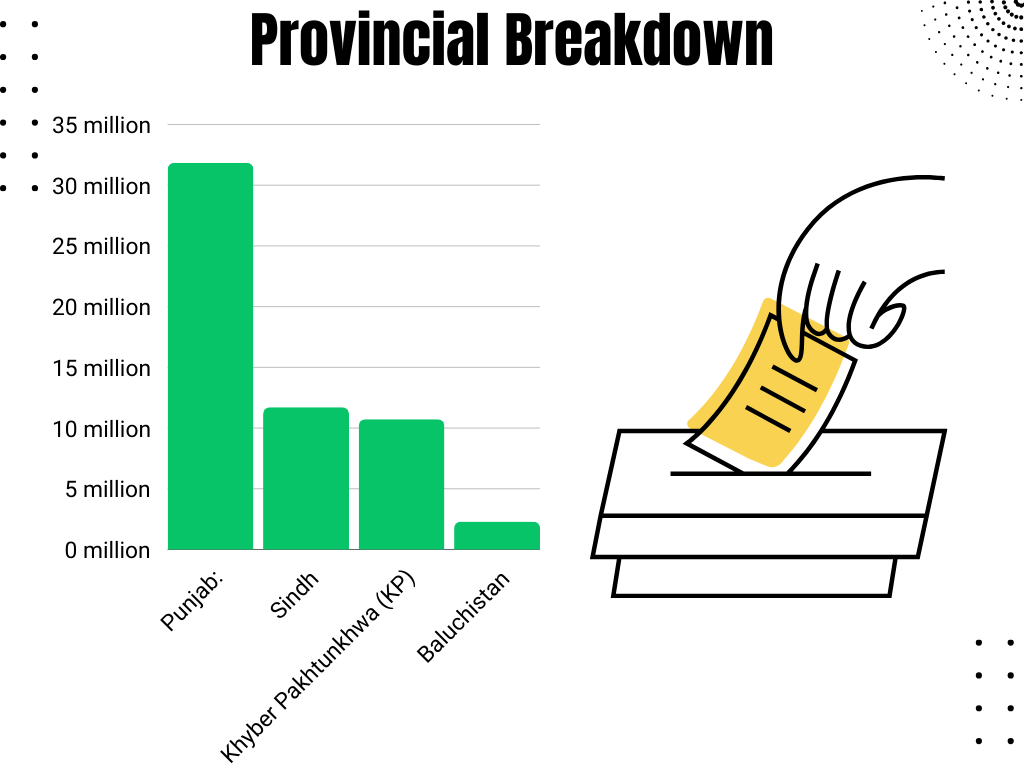
Age-wise Distribution
Age Groups and Gender
Analyzing the age groups and gender distribution of the burgeoning young voter population in Pakistan provides valuable insights into the evolving electoral landscape. In the 18-25 age bracket, a substantial cohort of 23.51 million voters has emerged, comprising 14.8 million males and 9.32 million females. Moving into the 26-35 age category, an even larger contingent of 33.34 million voters is observed, with 17.89 million being male and 15.44 million female. The 36-45 age group contributes significantly to the overall youth surge, totaling 28.74 million voters, including 15.08 million males and 13.67 million females. This nuanced breakdown by age and gender highlights the diverse composition of the young electorate, underlining the need for a nuanced understanding of their preferences and concerns in the political discourse.
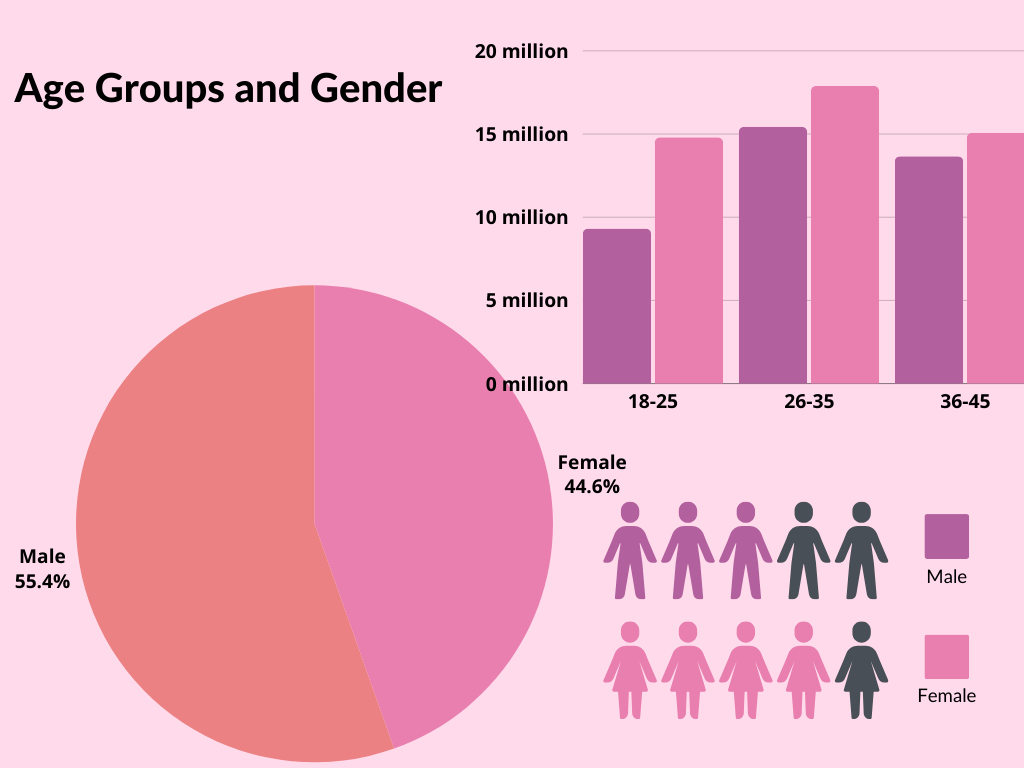
Districts with High Youth Representation
Examining districts with notable youth representation sheds light on regional variations in the surge of young voters across Pakistan. Khyber Pakhtunkhwa (KP) emerges as a focal point, boasting the highest proportion of young voters at an impressive 51.40%. Within KP, Bajaur district leads the charge with a striking 54.45% of its electorate falling within the young demographic. Similarly, North Waziristan and Khyber district follow closely, with 54.30% and 53.05% of their voters being young, respectively. In Baluchistan, Dera Bugti stands out as the district with the highest youth representation, reaching an impressive 52.92%. Further contributing to this trend, Dera Ghazi Khan in Punjab demonstrates a substantial presence of young voters, surpassing the 50% mark at 50.87%. These district-level insights underscore the diverse regional dynamics shaping the youth surge and emphasize the potential impact of the young electorate in specific localities on the forthcoming general elections.
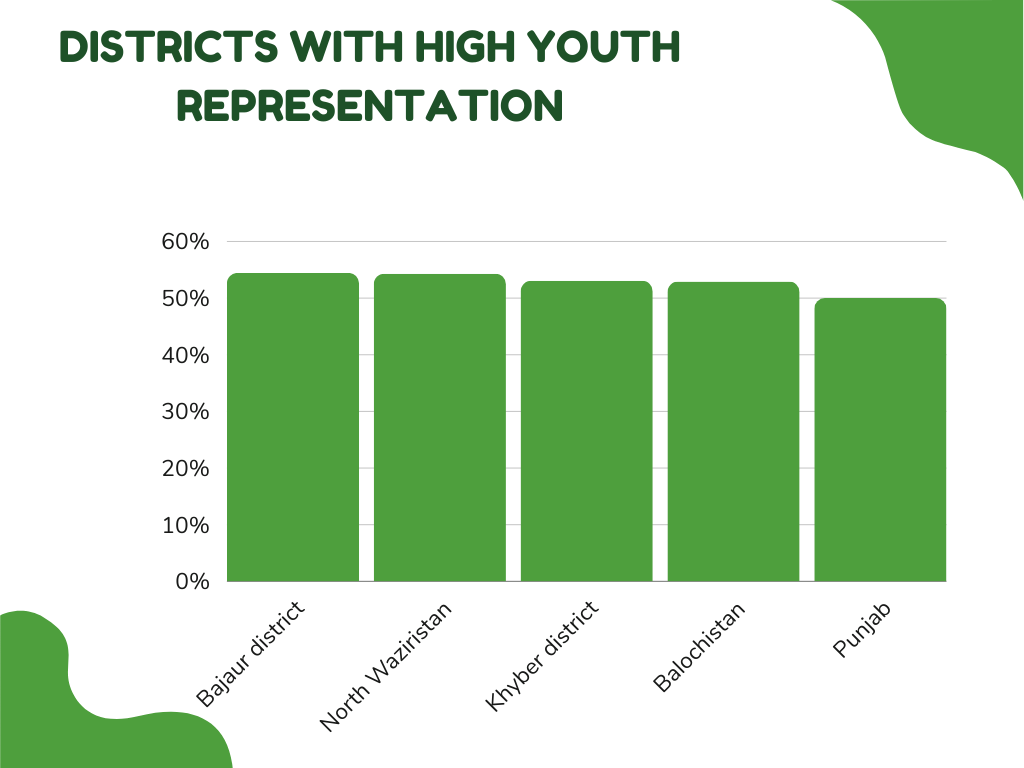
Districts with Low Youth Representation
In contrast to districts with high youth representation, Quetta in Baluchistan stands out for its comparatively lower proportion of young voters. The city exhibits a distinctive electoral profile, with only 23.26% of its voters falling within the young demographic. This lower percentage indicates a notable difference in the age distribution compared to other districts experiencing a surge in youth participation. Understanding the factors contributing to this lower representation in Quetta, such as socio-economic dynamics, educational opportunities, or political engagement, could provide valuable insights into the varied regional patterns of youth involvement in the electoral process. Policymakers and electoral strategists may need to tailor their approaches to address the unique challenges and opportunities associated with districts exhibiting lower youth representation, ensuring a comprehensive understanding of the diverse political landscape in Pakistan.
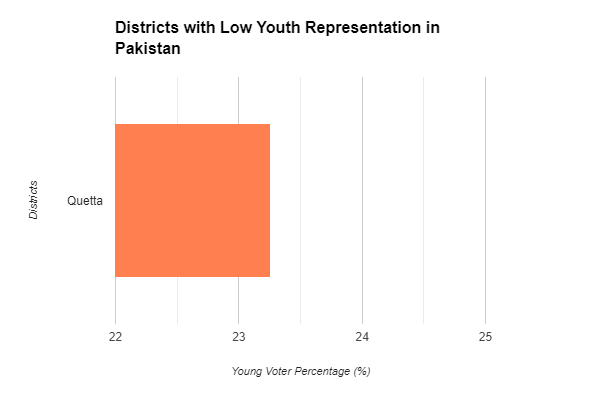
Trends over Time
Comparing data from previous elections:
A retrospective analysis of voting trends over time reveals a compelling narrative of growing youth participation in Pakistani elections. In 2018, young voters constituted a substantial 43.82% of the total electorate, showcasing a significant presence that already influenced the political landscape. Importantly, this marked an increase from the previous general elections in 2013, where the percentage of young voters was lower. The upward trajectory in youth participation between 2013 and 2018 underscores a noteworthy trend, suggesting an increasing engagement of the younger demographic in the electoral process. The evolving dynamics in the preferences and voting behaviors of the youth signify a potential shift in the political landscape, making it imperative for political stakeholders and policymakers to continually adapt their strategies to resonate with the evolving aspirations and concerns of this dynamic segment of the electorate.
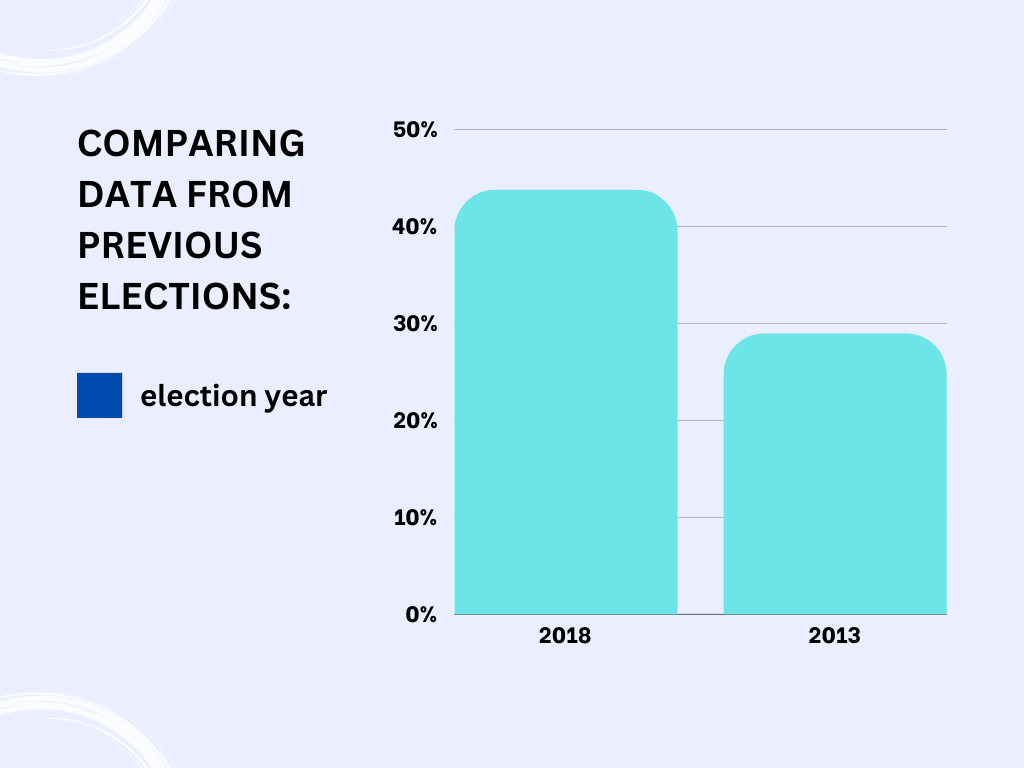
Conclusion
The surge in young voters, particularly in provinces like KP and districts like Dera Bugti, signals a potential shift in electoral dynamics. The influence of social media and the possibility of increased youth turnout on Election Day could significantly impact the outcome. Policymakers and political stakeholders should be attentive to these trends to address the aspirations and concerns of this growing demographic.
–Warda Khan
This post has been submitted by one of our interns. PNP Internship Program is an exciting career opportunity for Pakistani university students to get hands-on valuable experience required in national and international job market.
In order to ensure transparency, accuracy and accountability to our readership, please report whenever any error found or need to clarify /correct the post.



